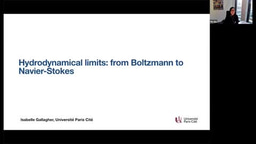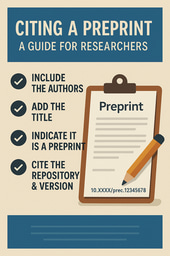DNA cryptography: Introducing chemical unclonable functions
Published in Chemistry, Materials, and Protocols & Methods

Entropy, or randomness, is not only a fascinating concept that plays a fundamental role in nature and the universe, but it is also of high relevance in information theory. Randomness is used in cryptosystems to achieve security, and true random numbers cannot be generated by deterministic algorithms. Thus, as a source of randomness the physical world has historically always had an important role in cryptography.
Usually, such randomness is applied in mathematical algorithms to generate random, but reproducible outcomes when encrypting information. However, some of these functions may soon become obsolete: Algorithms to crack these systems exist that could be implemented on quantum computers, potentially threatening some of the current systems. In the last twenty years, researchers have therefore been looking for alternatives. One intriguing possibility is the detachment of cryptography from mathematics and theoretical concepts, which in turn also prevents attacks performed by computers. This works by embedding cryptographic technologies in the physical structure of an object, directly tying the cryptographic functionality to it. Such objects are called physical unclonable functions (PUFs) and work based on the intrinsic entropy of a randomly manufactured item. Not all items are suitable as physical unclonable functions: For a PUF, random components are required, which need to be able to process a physical stimulus and return a different or modified signal. In such a system, the physical randomness of the object leads to unpredictable and irreversible output signals, which are nonetheless reproducible. These are functionalities that mimic mathematical one-way algorithms. However, due to their output stemming from the true randomness of a physically unique object, PUFs cannot be attacked by computational means.
Much like the scientists working on physical unclonable functions, our research group has always been fascinated by physical – or in our case rather chemical – information systems. The molecule we have been particularly intrigued by is DNA: Its extraordinary (bio-)chemistry, ingeniously developed by million-year-long evolutionary processes, allows us to write, read and copy digital information in the form of the four bases A, C, G, and T. The extraordinary information density of several exabytes per gram of DNA is unparalleled and inspired many scientists to use DNA for information technology. Among many other discoveries, a few years ago, this research has led to the development of a synthetic process to generate random DNA sequences. The massive parallelization of this random synthesis method allows us to generate 600 petabytes worth of random information in a single reaction and at a cost of <100 USD. This gives us access to DNA pools comprising trillions of unique sequences.
Having this powerful tool at hand, we were inspired by the research on physical unclonable functions. With PUFs relying on large sources of physical randomness, and DNA synthesis being able to provide massive amounts of chemical randomness, the idea of generating the first chemical unclonable function based on DNA was born.
In our study, we generated random DNA pools comprising a hundred million and more unique sequences as our random object. Due to its randomness and extreme vastness, the pool composition cannot be known in its entirety. Nevertheless, even without this knowledge, the pool can be “operated” through the specific chemical interactions of Watson-Crick base-pairing. This operation allows us to provide the system with an input, which chemically reacts with the random pool to generate an output that is specific and unique to the combination of the input and the pool. Moreover, as is the case for physical unclonable functions, the output does not reveal any information about the input, meaning the calculation is a “one-way” operation.
In contrast to previous suggestions for DNA-based cryptography, the function we introduce does not rely on the mere hiding of information, but on chemical computations. This use of DNA’s unique chemistry bridges the concepts of information storage and computation and opens doors for applications not covered by mathematical one-way functions or physical unclonable functions. For example, through processing techniques uniquely applicable to DNA, our design allows the manufacturing of multiple identical pools. These pools can in turn no longer be copied at a later stage due to chemical modifications of the DNA. This, for example, enables peer-to-peer authentication systems and counterfeit-secure product labelling. Such decentralized multi-user applications bridge a critical gap between PUFs and mathematical one-way functions: DNA-based chemical unclonable functions are distributable, but at the same time still object-bound and quantum-secure, a combination otherwise not achievable by current means. With the rise of blockchain technologies, implementing such decentralized trust architectures based on DNA could mark an important step in furthering the connection between the physical and the digital world.
Follow the Topic
-
Nature Communications

An open access, multidisciplinary journal dedicated to publishing high-quality research in all areas of the biological, health, physical, chemical and Earth sciences.
Related Collections
With Collections, you can get published faster and increase your visibility.
Women's Health
Publishing Model: Hybrid
Deadline: Ongoing
Advances in neurodegenerative diseases
Publishing Model: Hybrid
Deadline: Dec 24, 2025





Please sign in or register for FREE
If you are a registered user on Research Communities by Springer Nature, please sign in